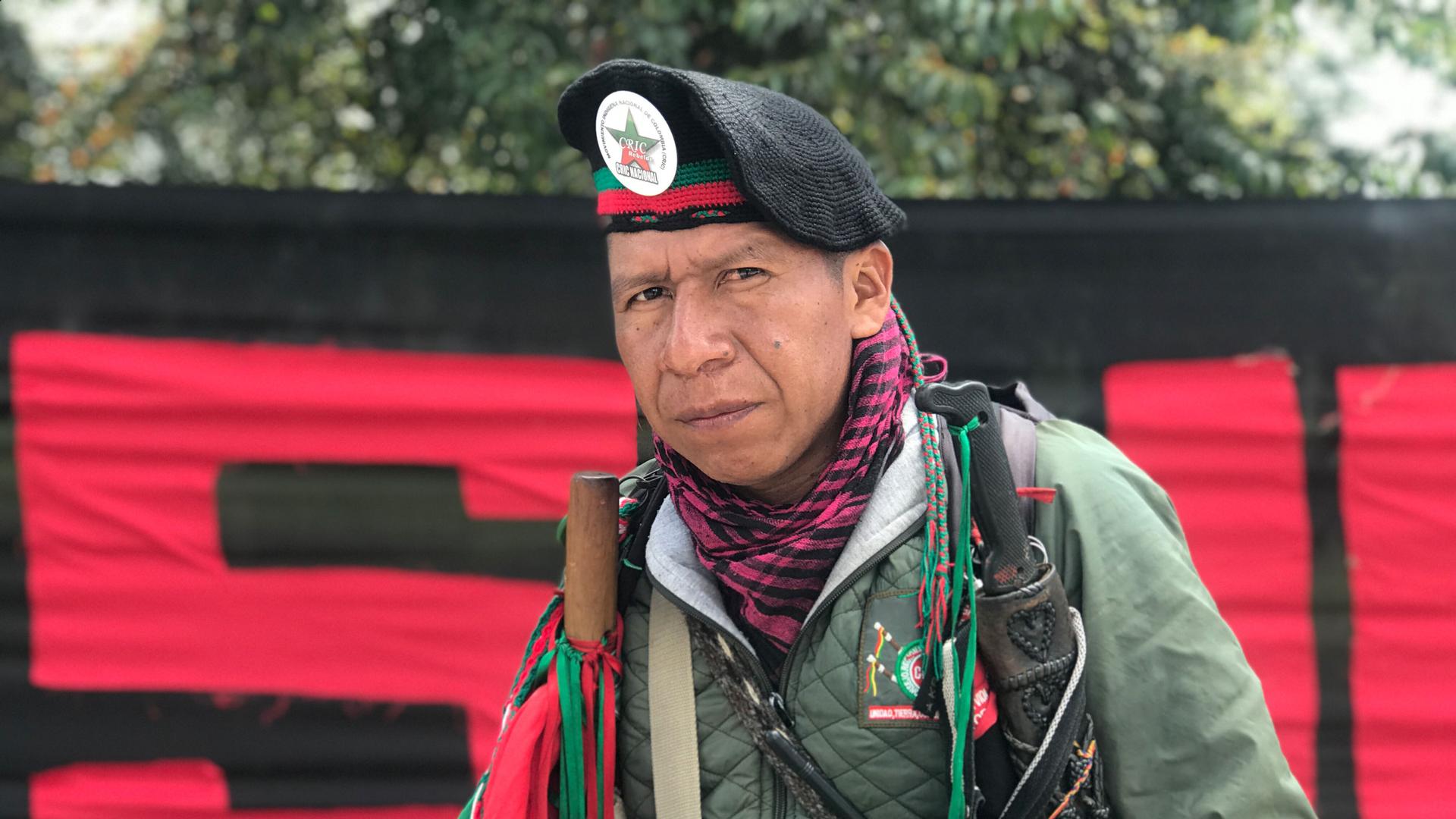Photos: Colombia’s Indigenous Guard, defenders of land, the environment and their own lives
A flourish of red and green flags and giant multicolored buses marked the arrival of Colombia’s Indigenous Guard to Bogotá to take part in a third national strike last week. They were greeted by cheering supporters, surrounded by murals of Che Guevara and other deceased left-wing leaders at Colombia’s largest public university, where they were being hosted.
Strikes and protests in the Andean nation have been ongoing since November 21. Although the government has been keen to stall matters until the Christmas period hoping activist fervor will eventually die down, more than three weeks have passed so far, with protesters seemingly still standing strong.
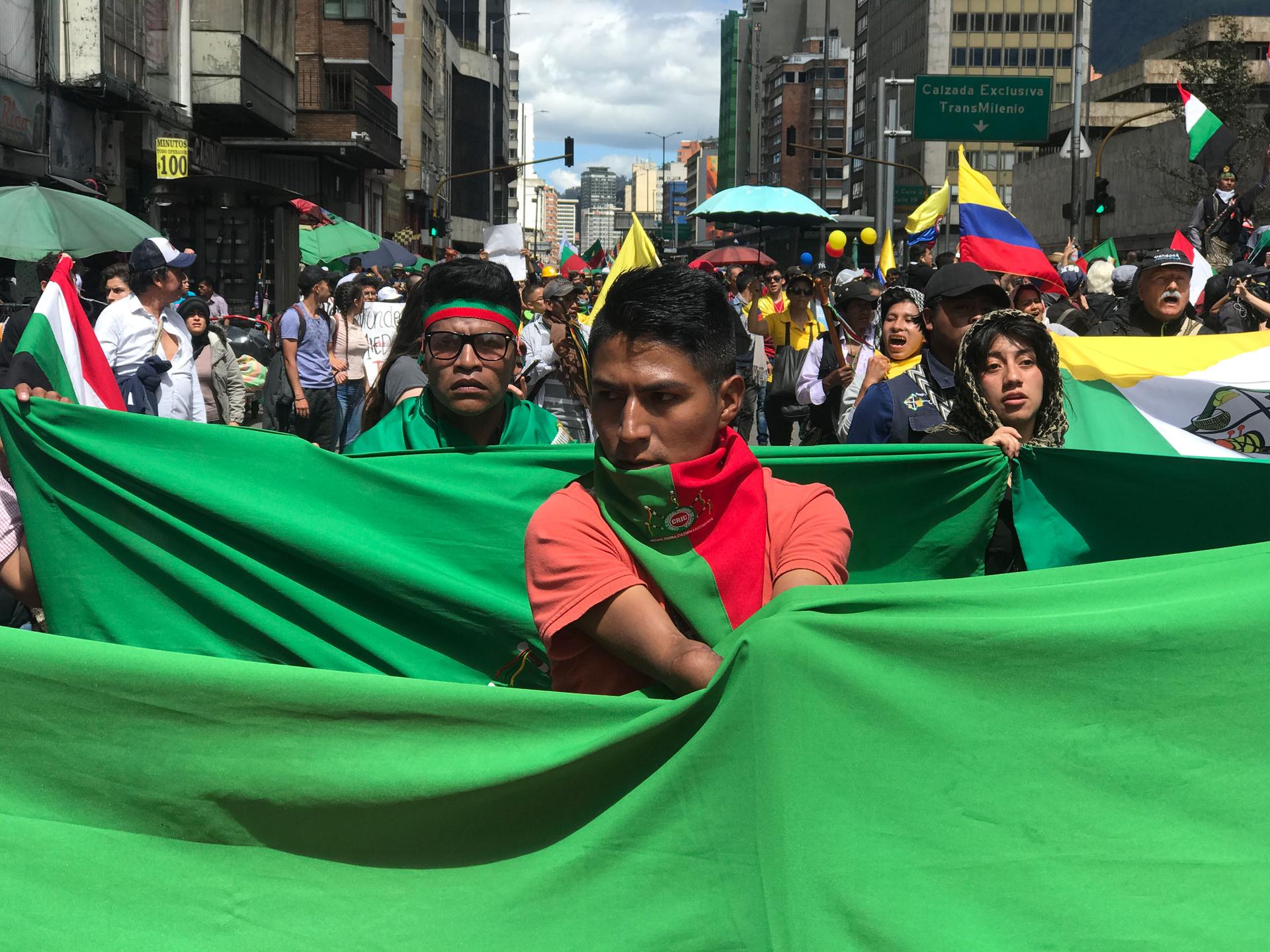
The Indigenous Guard is a community protection network made up of women, men and children who defend their territories without weapons. It originated in Colombia’s violent southwestern Cauca region, and in 2001 it began to operate as an organized force.
Most Indigenous Guard from Cauca are from the Nasa Indigenous group — the biggest, most organized of the groups — who have trained other communities throughout Colombia over the years to defend their own territories. Their main purpose is to protect their ancestral lands from armed groups who want to take control of it.
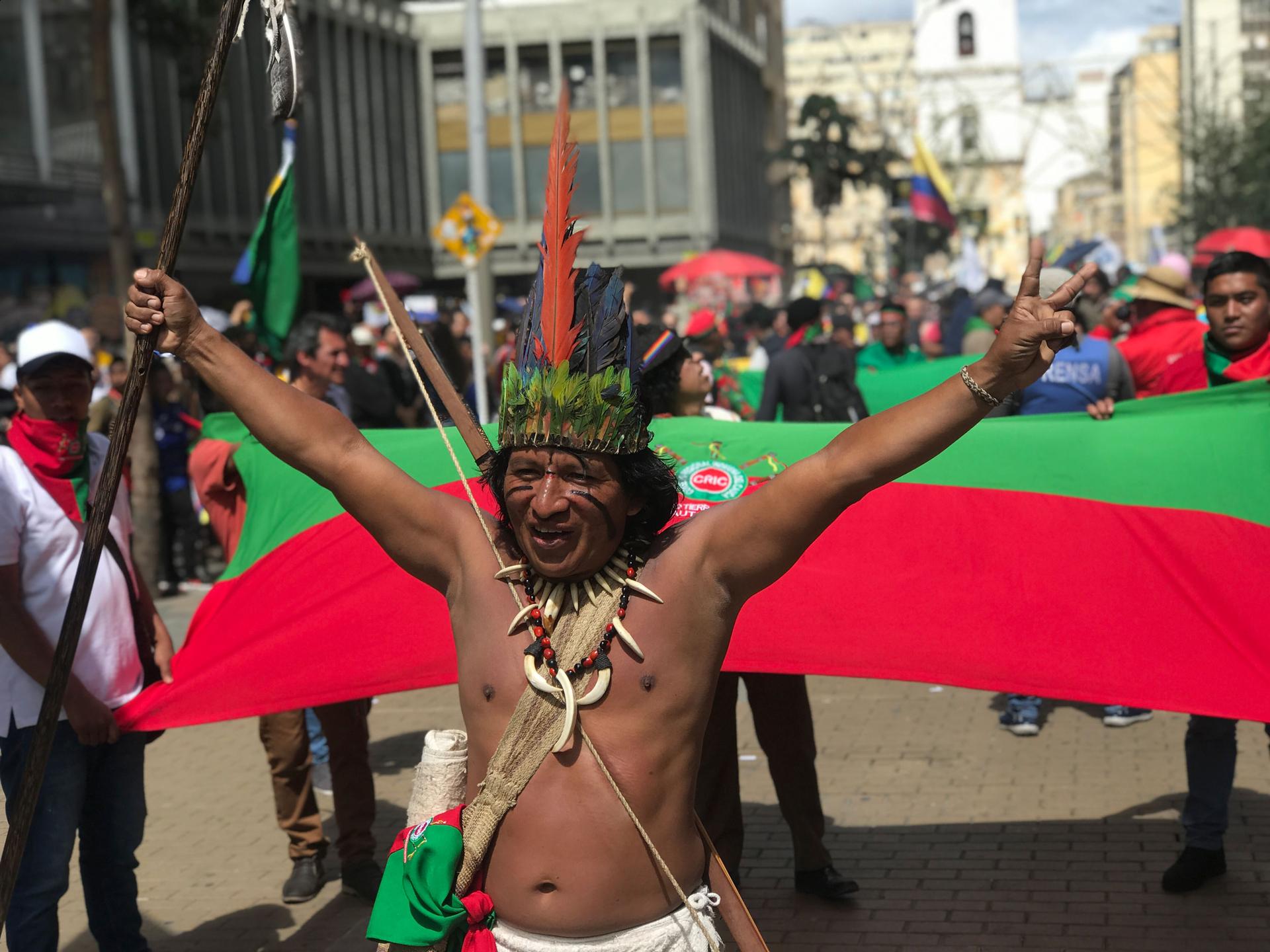
In 2016, Colombia signed a peace agreement between the previous government of Juan Manuel Santos and the Revolutionary Armed Forces of Colombia (FARC), ending a bloody five-decade-long conflict that left 260,000 dead and millions displaced. The current government, led by Ivan Duque since 2018, has been internationally criticized for its weak implementation of the peace deal.
As the FARC disbanded and left rural areas they used to control, power vacuums opened and other armed actors moved in, vying for control of the valuable land for illegal mining or coca production — the base ingredient for cocaine — many on Indigenous territory.
Since January 2016, 88 Indigenous leaders have been killed in the Cauca region, according to the latest report by INDEPAZ, a peace and development think tank. Dozens more have been killed in other parts of the country.
The Guard and other Indigenous groups from all over Colombia traveled to Bogotá last week to take part in the third national strike. Protesters have wide-ranging demands — including that the government do more to stop the murder of human rights activists; support former leftist rebels and dissolve the riot police, accused by marchers of using excessive force. For many, it was their first time in the capital and also a chance to interact with members from other groups.
But they all had one common message for the government: “Listen to us.”
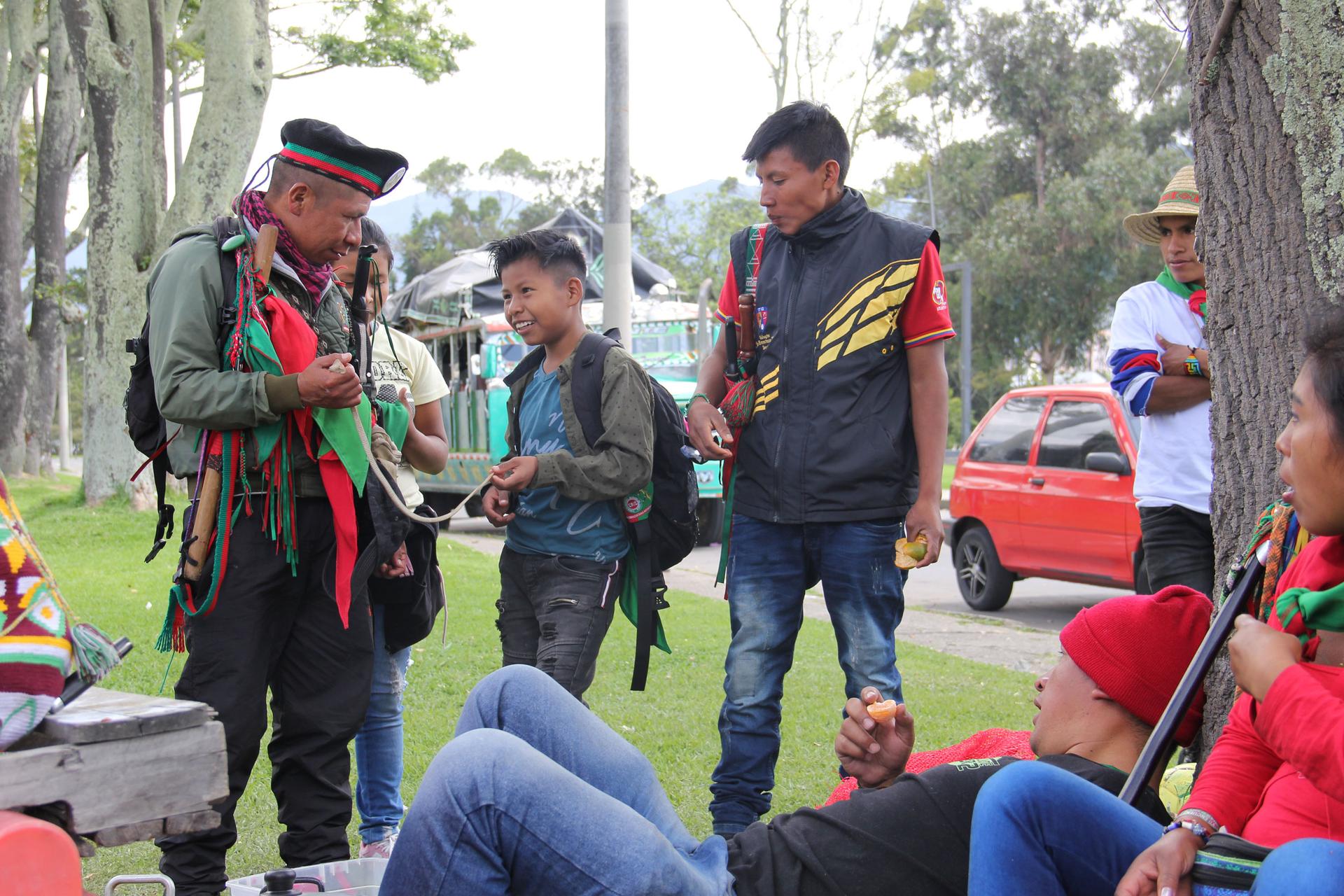
Jose Albeiro Camayo, 39, coordinator of the Indigenous Guard in Northern Cauca, has had five attempts against his life for defending his territory. Right-wing paramilitaries, left-wing guerrilla groups and drug gangs want control of their territories to expand illegal mining and coca cultivation.
Camayo says he’s survived five attempts against his life. In October, paramilitaries kidnapped, tortured and interrogated him. He was found tied to a tree with barbed wire around his hands and neck.
The Indigenous Guard do not bear weapons. Instead, they each carry a baton to represent their allegiance to the collective; a machete to trek through dense forest terrain; and a two-way radio to stay in constant contact with their comrades.
“We never use guns. The day we start doing that is when we lose our vision of defending land and life,” Camayo told The World.
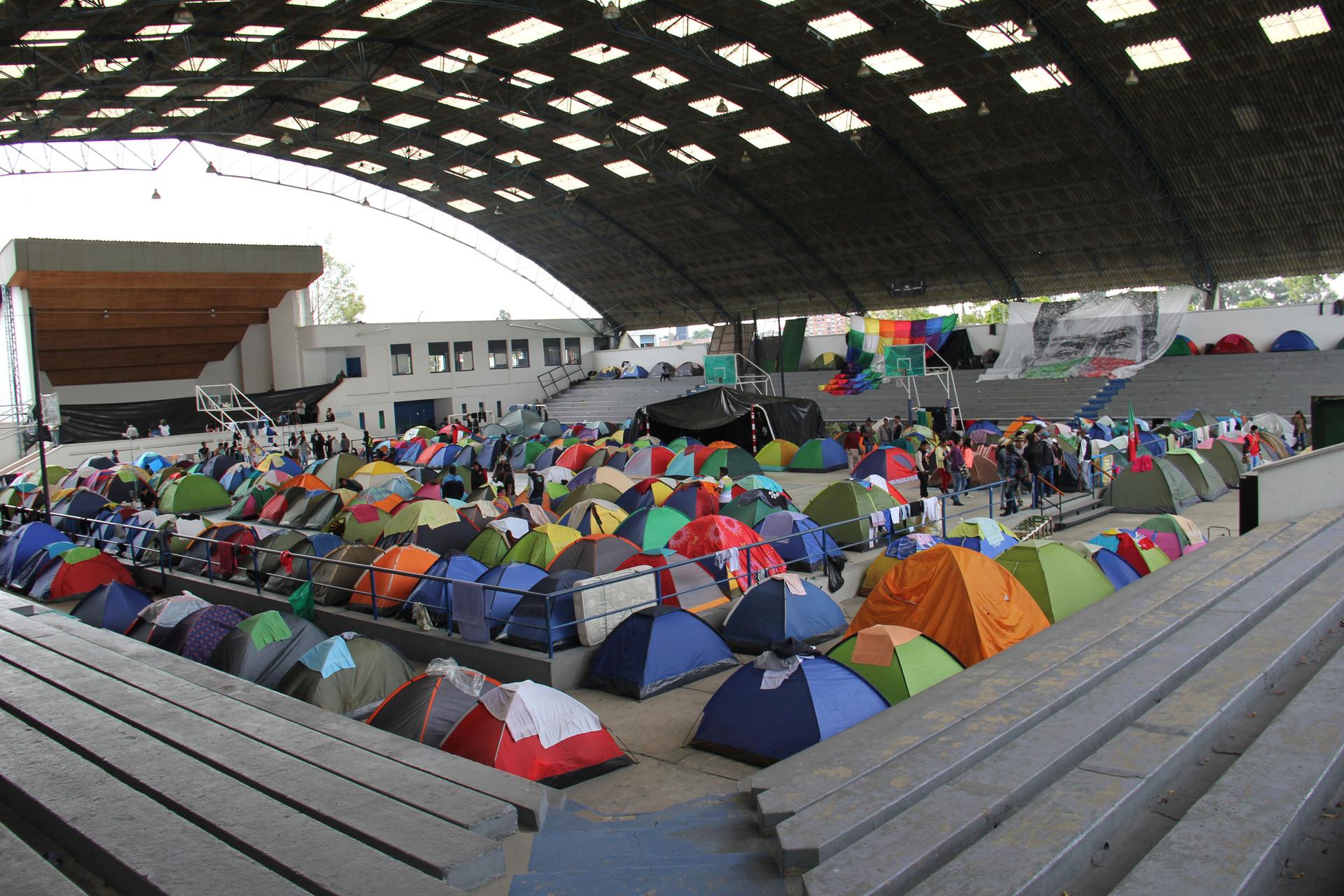
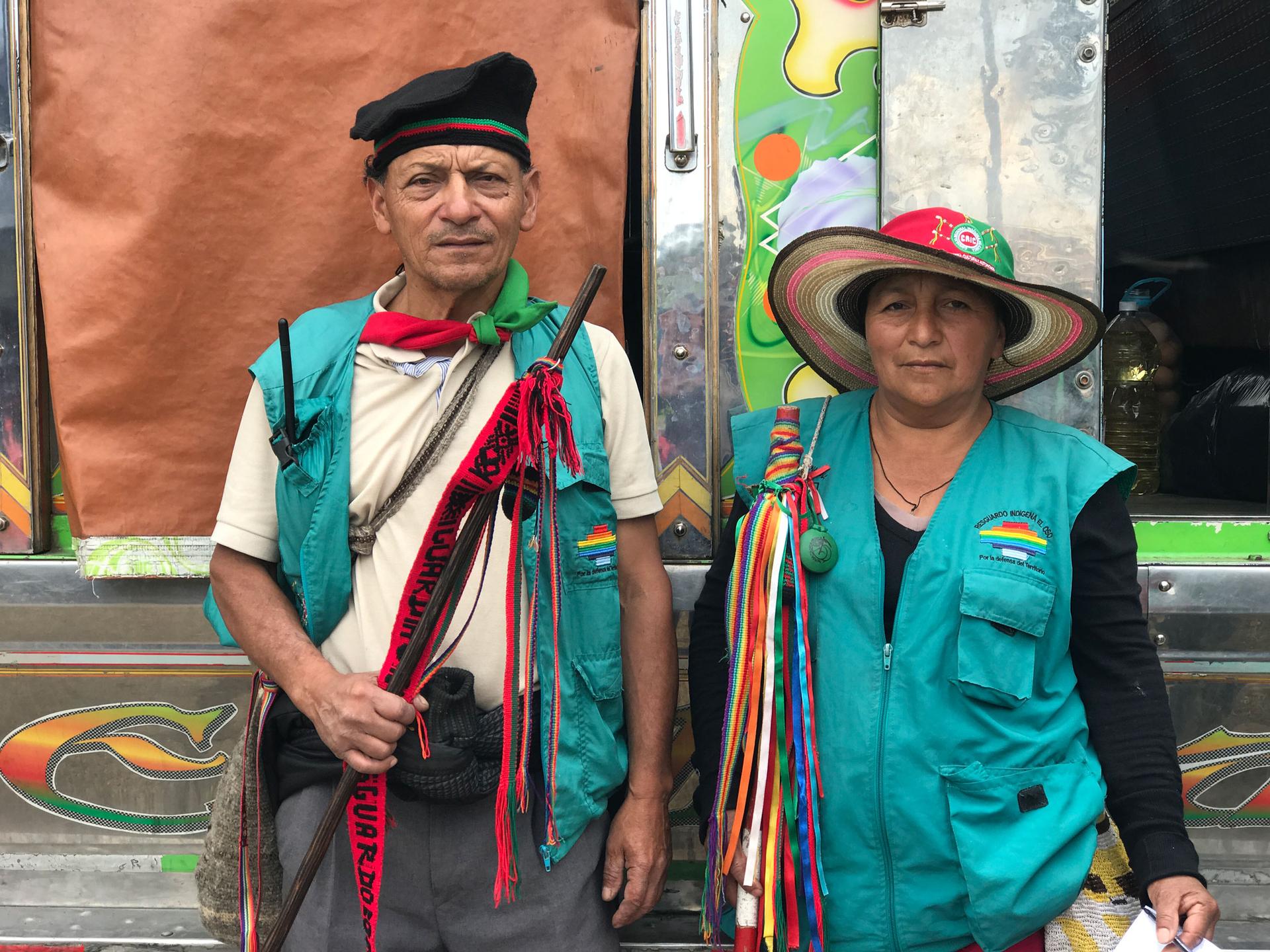
Rigo Gomez and his partner Angelica Gimenez, who are from from southern Huila region, came to Bogotá to demand rights for Indigenous peoples.
“It was great that it was a peaceful march,” Gimenez said of Wednesday’s national strike, in which they took part. “We hope he [President Duque] listens. He hasn’t fulfilled his role. That’s why we’re here, to demand our rights.”
Gimenez said the reason she is part of the Guard is to defend her people’s territory, lives and the environment.
“We’re always defending, but in peace and coexistence,” she said.
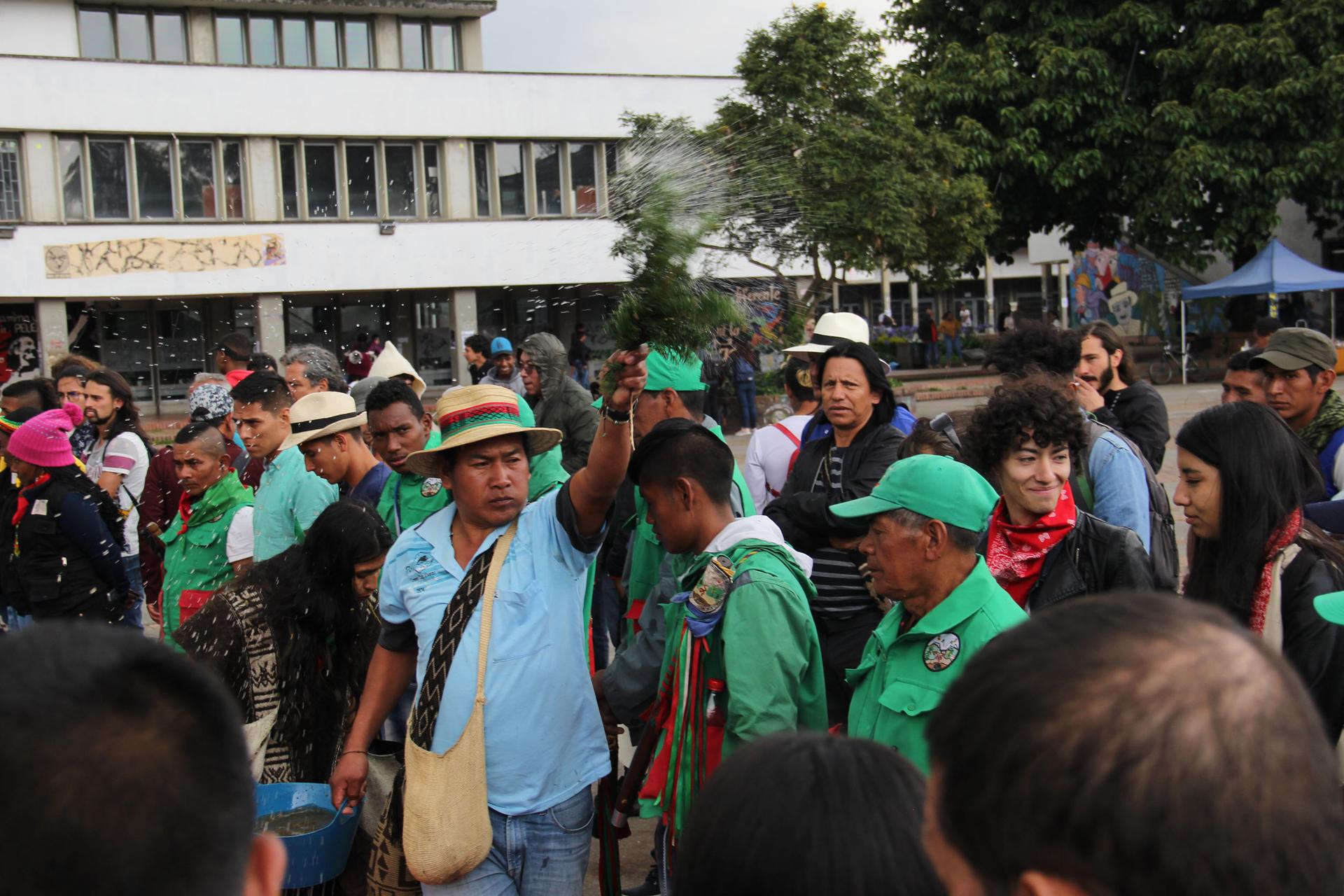
Many Indigenous demonstrators carried red, white, green and black flags.
“Red is the blood spilled from our comrades killed in the struggle. White is peace. Green is for the defense of nature, and black represents the grief for those lost,” said Jaime Camacho, an Indigenous leader from Huila.
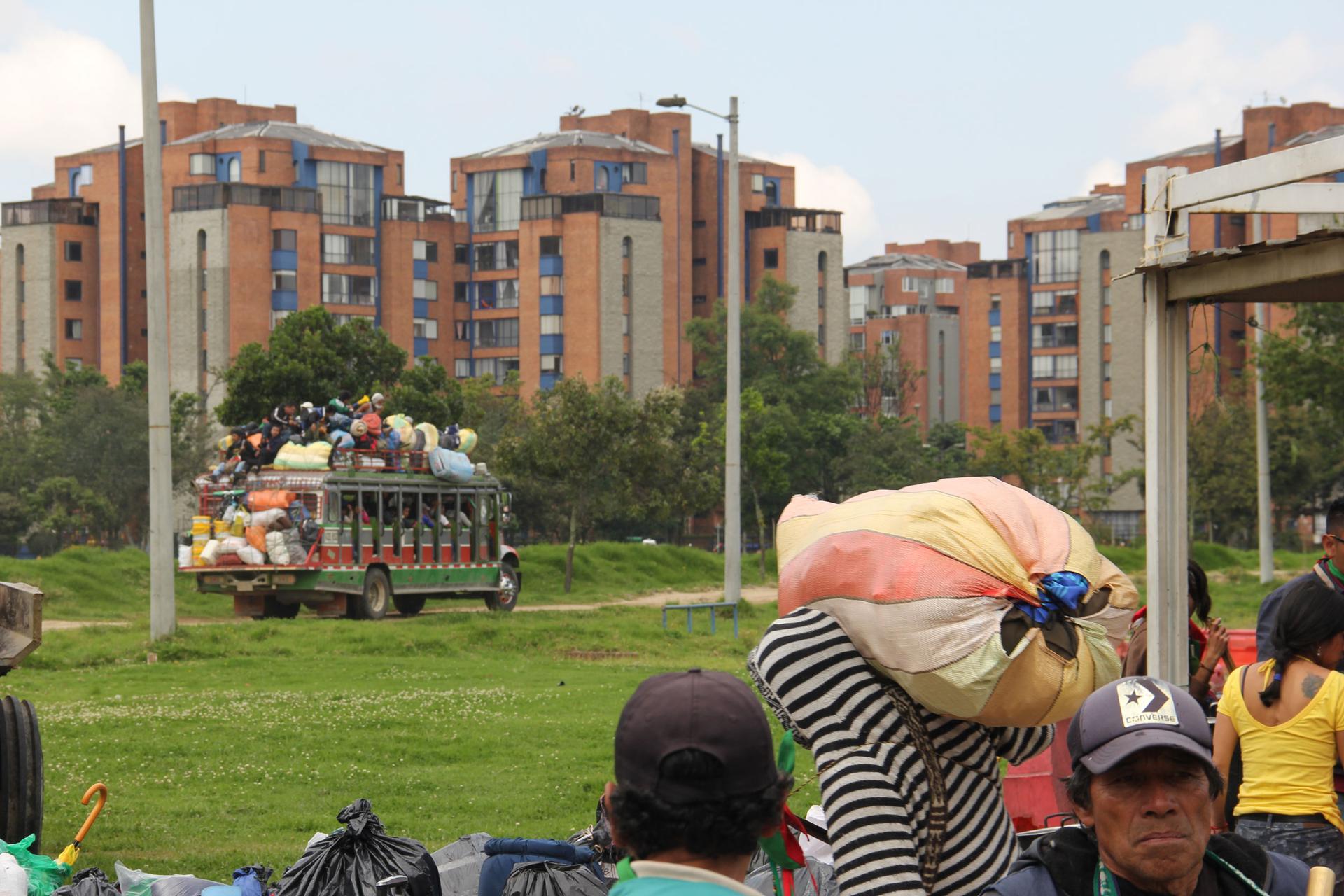
Several Indigenous people participating in the marches told The World they will return in greater numbers in the coming year if the government does not agree to direct dialogue with them.
While their chiva — a large, traditional and brightly colored bus — drove off, the remaining members chanted, “Guardia, guardia. Fuerza, Fuerza. Hasta cuándo? Hasta siempre!” That roughly translates to, “Guard, guard. Resist, resist. Until when? Forever!”
The World is an independent newsroom. We’re not funded by billionaires; instead, we rely on readers and listeners like you. As a listener, you’re a crucial part of our team and our global community. Your support is vital to running our nonprofit newsroom, and we can’t do this work without you. Will you support The World with a gift today? Donations made between now and Dec. 31 will be matched 1:1. Thanks for investing in our work!
